Bristol Blenheim Recovery 15/07/07
We will remember them.
This is a record of the recovery of
Bristol Blenheim R3912 which crashed on the 5th of July 1942 after a
practise bombing mission.The crew's bodies were recovered in 1942.
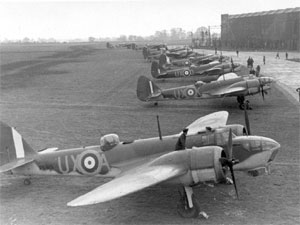
The Bristol Blenheim lost more aircrews than any other RAF aircraft in service
during World War Two.
Note the balloon hangar to the
right in the distance. Did this cause the aircrafts demise? read on.
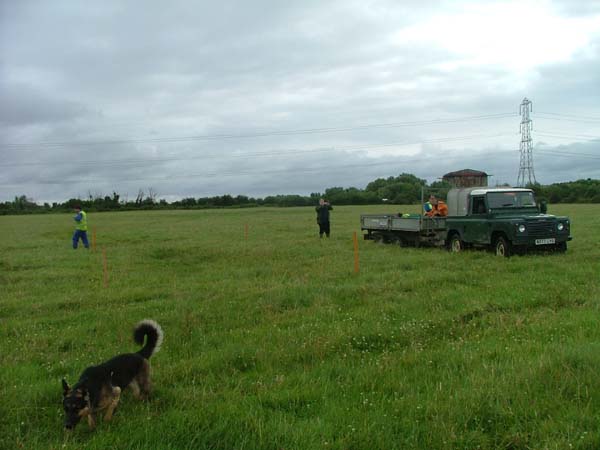
The digger and and other members of the team arrive.
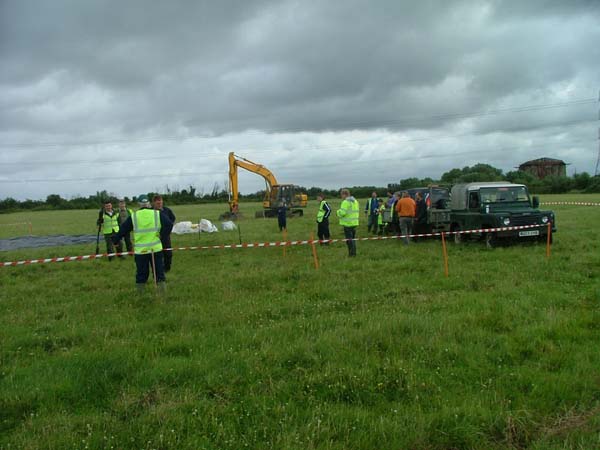
The first find of the day a wing ballast weight this is
where it lay just under the topsoil.
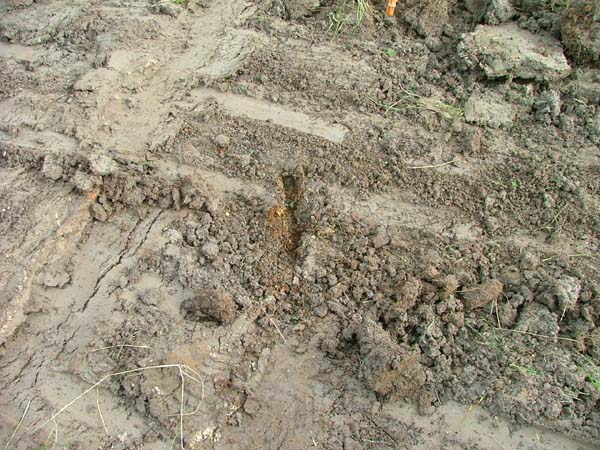
The aircrafts dingy note the green marker
fluid.
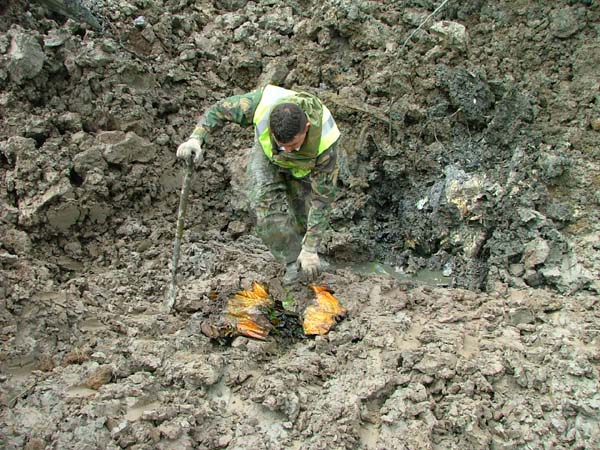
One of many dumpy bags filled with artefacts.

She starts to emerge.
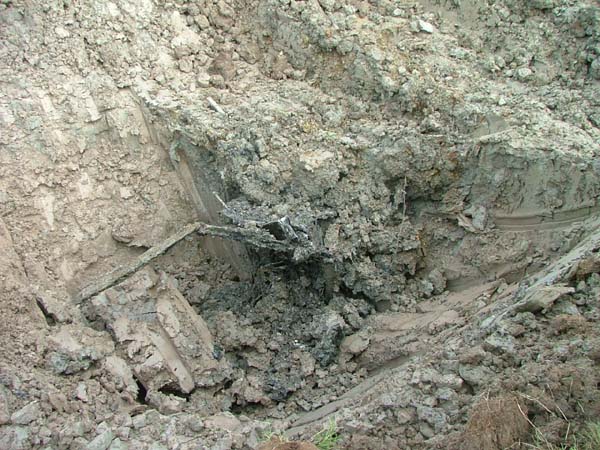
Gun compressor, the clay soil
had preserved most pieces in excellent condition.
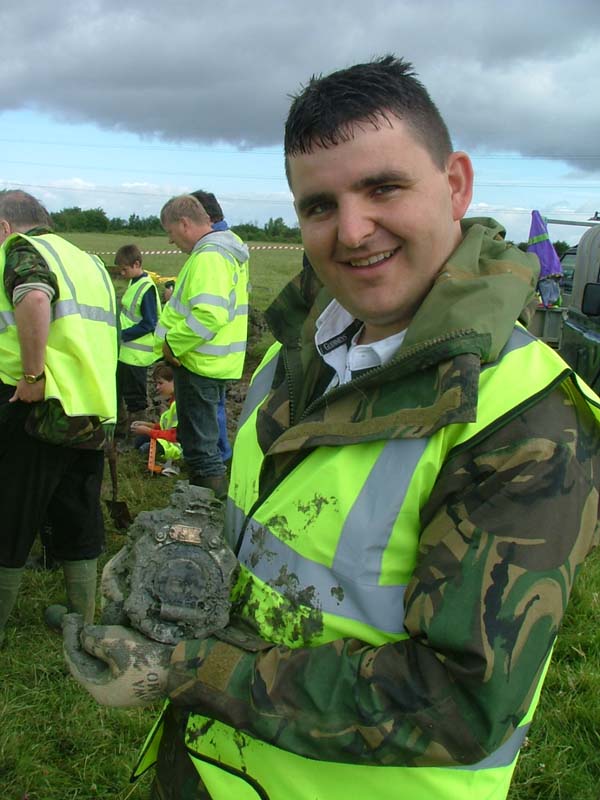
A substantial piece is recovered.

One of the main undercarriage legs. Don't be fooled by the
picture, the leg itself was like new under the mud.
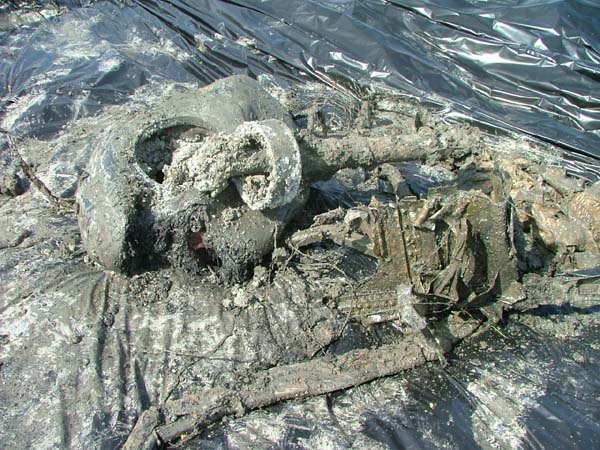
A prop blade complete with hub and crank.
Once again the blade is like new under the mud.
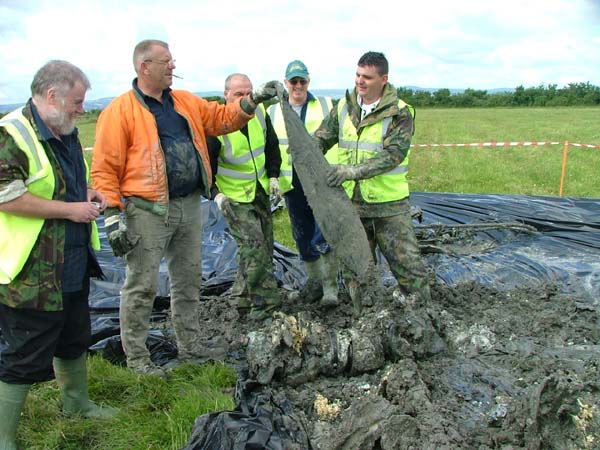
Did this cause the crash. In 1942 the RAF were unable to
establish the cause of the crash due to the depth of the engines. The prop blade
shown has signs of hitting a balloon cable. Their was a barrage balloon used for
cable cutting tests within half a mile of the crash site and an eye witness
present today said that the cloud cover was very low on the day of the crash.
Did the aircraft make contact with this balloon??
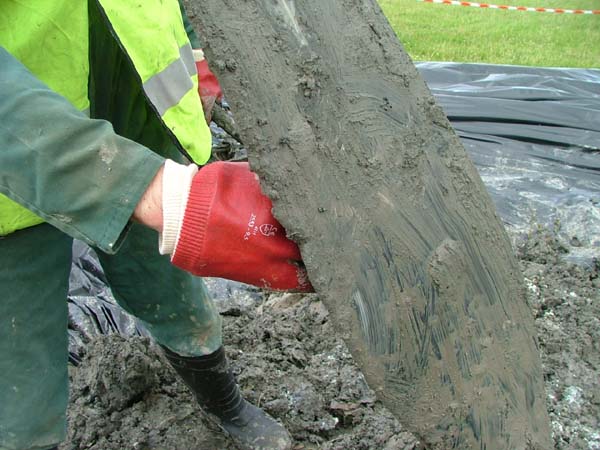
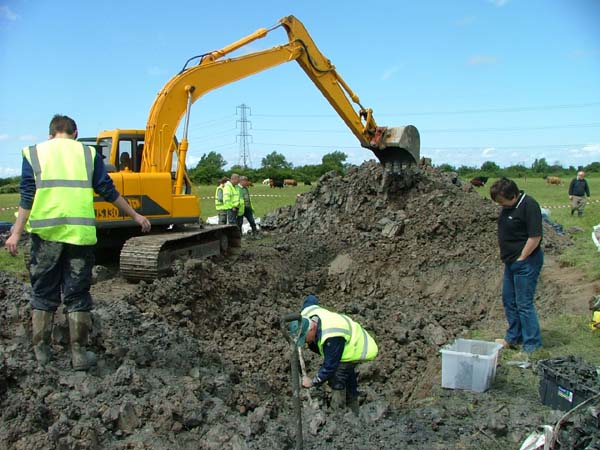
The second engine appears.

The pleasant smell of oil and fuel known and loved by all
those who have recovered aircraft.
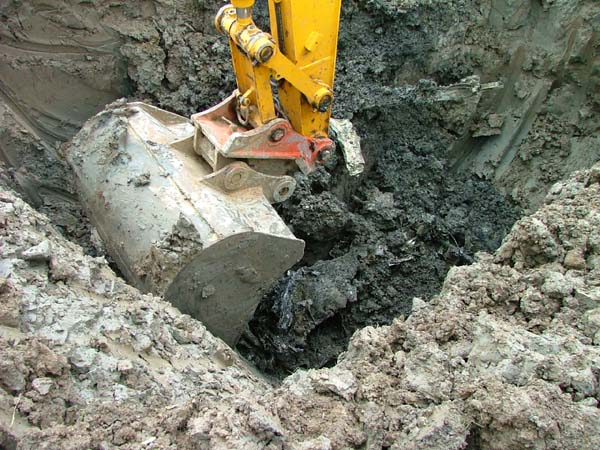

A Rotax part
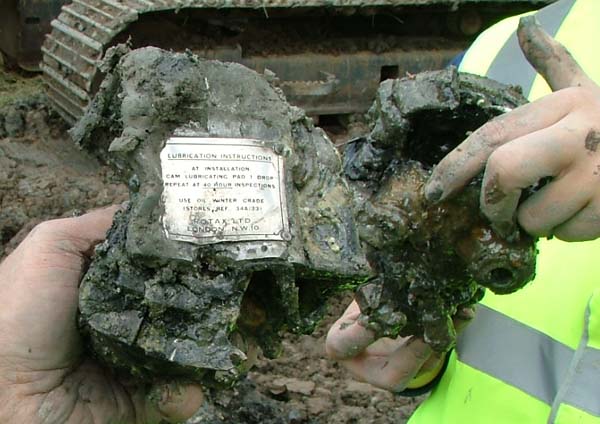
Note the prop blade and hub lifted from 14Ft down. The
rest of the engine was in bits.
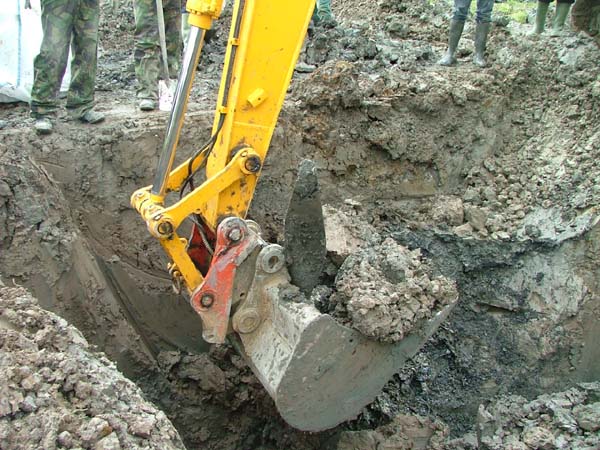
Wrestling with the blade and its hub.

Searching the spoil.
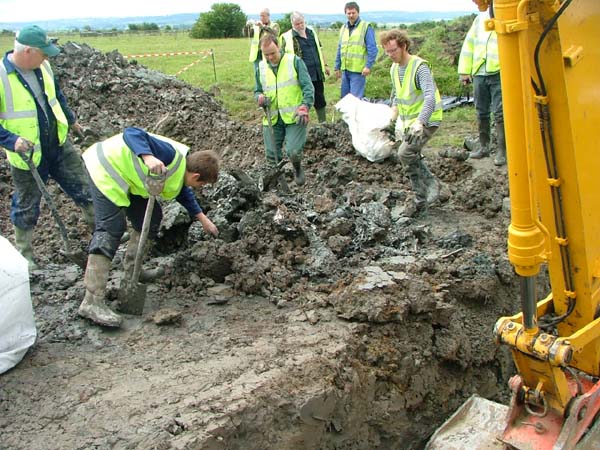
A close up of the hub. Wait until you see it clean!!
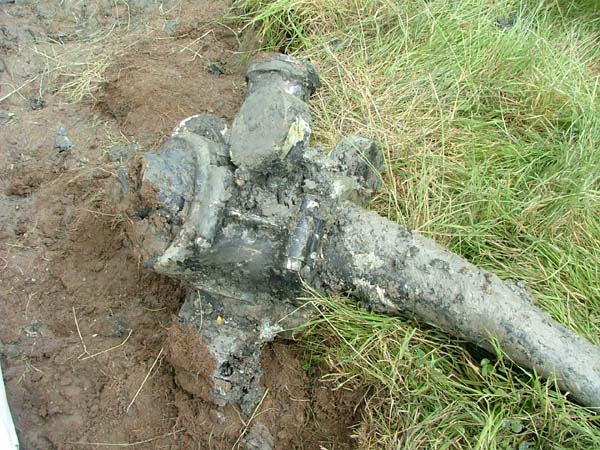
Another dumpy bag full to the brim.
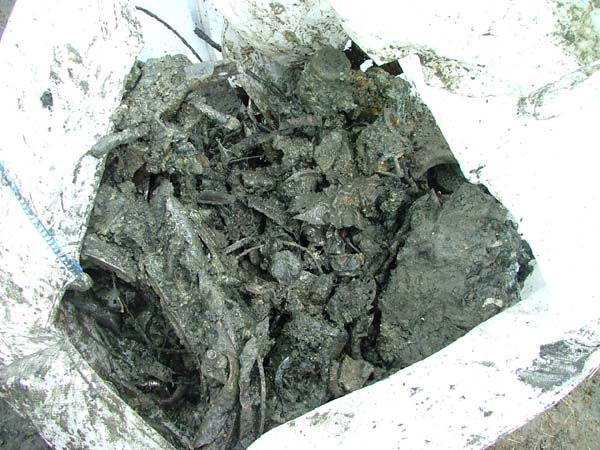
Another Rotax part
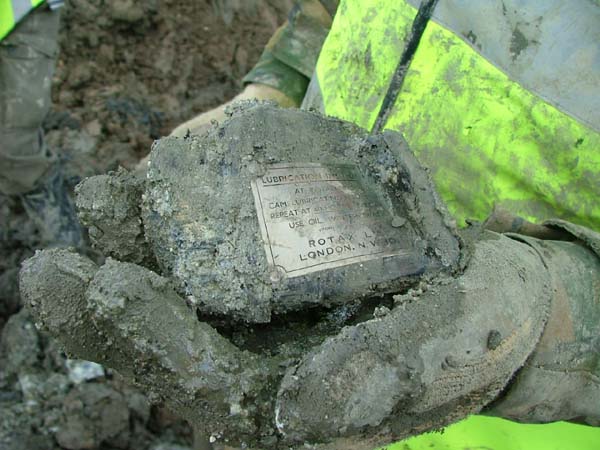
More recovered parts.
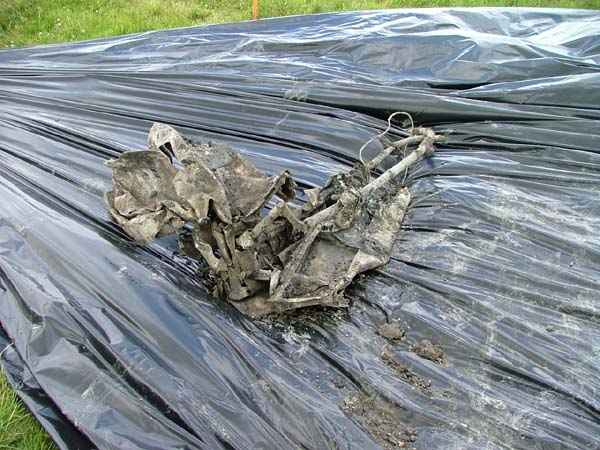
|
